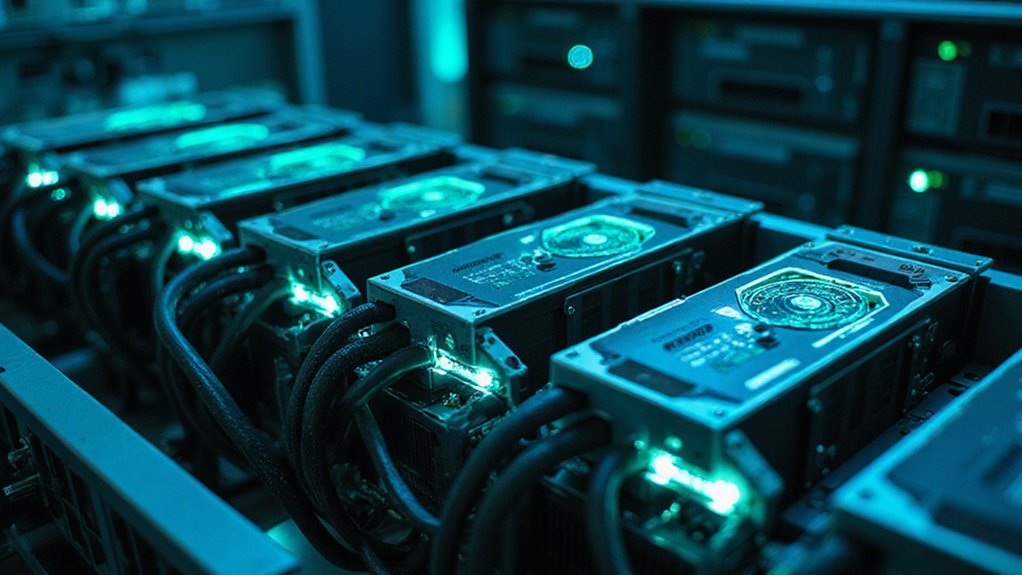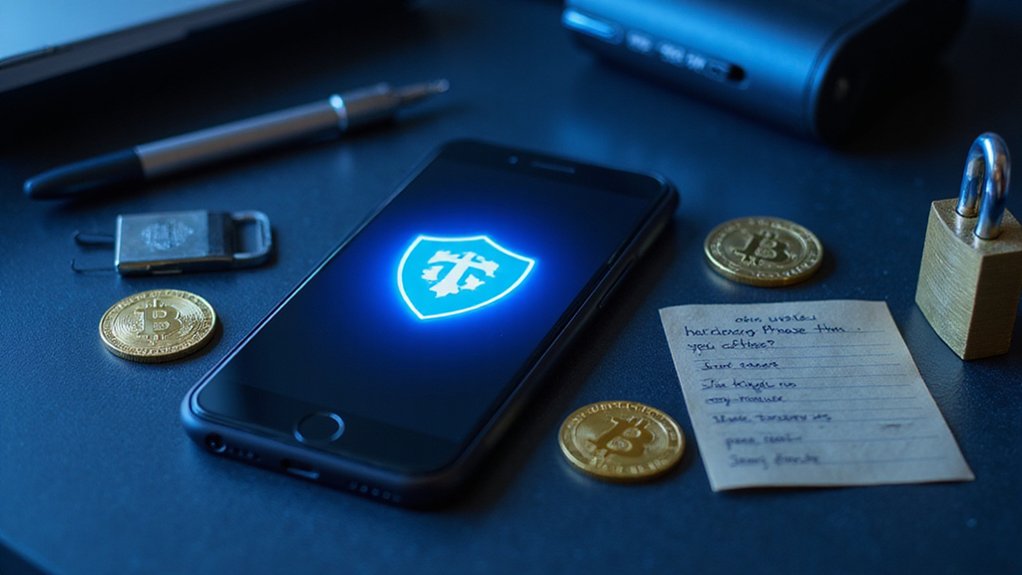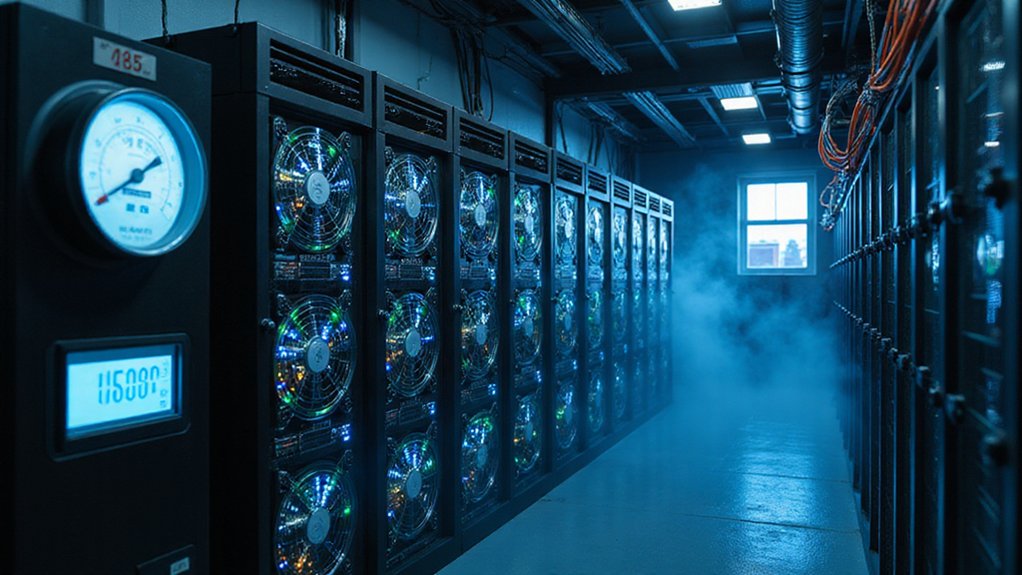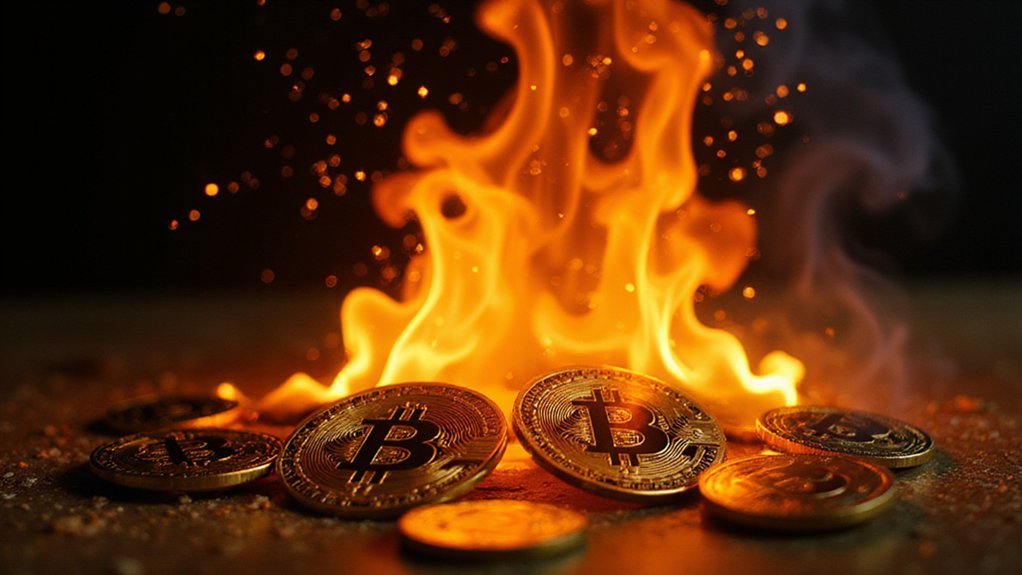Cryptocurrency mining is a computational competition where participants (miners) validate transactions and secure blockchain networks by solving complex puzzles. These digital prospectors deploy specialized hardware—primarily ASICs or GPUs—to generate cryptographic hashes below target values, earning newly minted coins as compensation for their electronic labor. The process consumes substantial electricity, prompting environmental concerns and alternative consensus mechanisms like proof-of-stake. Understanding mining’s economic equilibrium requires balancing hardware costs, energy consumption, and market volatility—a trinity of factors that separates profitable operations from expensive hobbies.
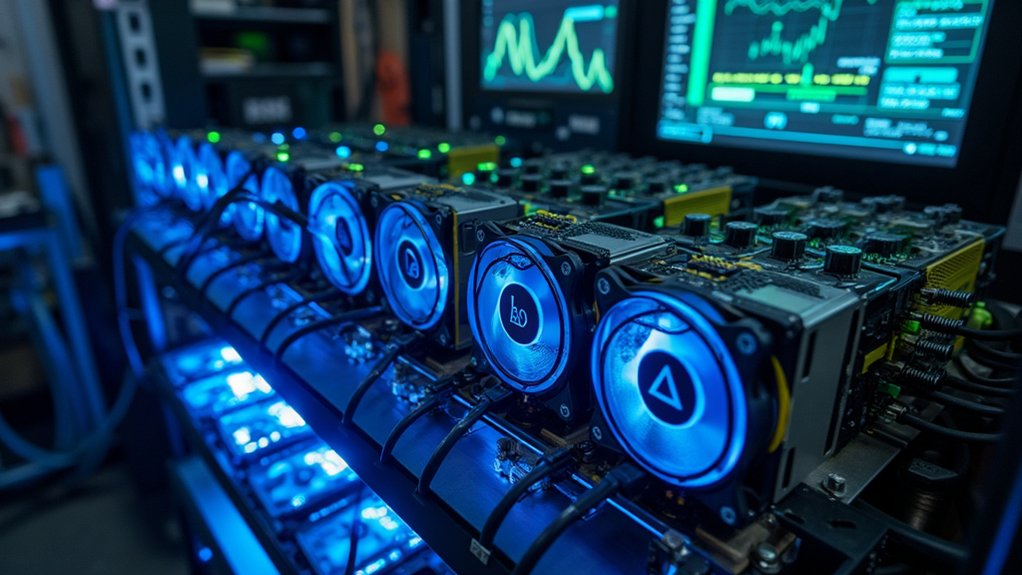
Miners basically operate as distributed auditors, deploying specialized hardware to compete in solving cryptographic challenges.
The victor in this digital competition earns the privilege of adding the next block of transactions to the chain and, as compensation for their computational labor and electricity expenditure, receives newly minted cryptocurrency.
ASIC miners, purpose-built computational workhorses, dominate large-scale operations, while GPU setups remain viable for certain altcoins (though their profitability has become increasingly questionable as difficulty parameters adjust upward).
ASIC technology rules the mining arena while GPUs cling to relevance in niche cryptocurrency ecosystems—a profitability gap widening with each difficulty adjustment.
The mining landscape offers various participation models—from solo mining (a high-variance proposition requiring substantial infrastructure) to pool mining (where participants combine computational resources and share rewards proportionally).
Cloud mining presents an alternative for those reluctant to invest in physical hardware, though one must approach such services with appropriate skepticism regarding promised returns.
Operations of any scale necessitate appropriate software integration through platforms like CGMiner or BFGMiner, which interface between hardware and chosen blockchain networks. Proper setup requires updating firmware regularly to maximize efficiency and maintain competitive performance in the increasingly demanding mining ecosystem.
Profitability hinges on astute management of multiple variables: electricity costs (which can devastate margins), hardware selection, cooling infrastructure, and market dynamics. The validation process involves creating a cryptographic hash with a value below the target hash value established by the network.
Each cryptocurrency has a finite supply, with Bitcoin capped at 21 million coins, creating scarcity that influences mining economics and long-term value propositions.
Most successful operators maintain meticulous cost-benefit analyses.
Environmental concerns cast an increasingly long shadow over mining operations, with Bitcoin alone consuming electricity comparable to mid-sized nations—a reality that has spurred greater interest in proof-of-stake alternatives that eschew energy-intensive computational puzzles entirely.³
As regulatory scrutiny intensifies globally, miners must navigate not only technical and economic challenges but increasingly complex compliance requirements as well.
²Albeit with volatility that would give traditional market participants cardiac events.
³Which, ironically, renders the term “mining” itself obsolete.
Frequently Asked Questions
How Much Electricity Does Mining Consume?
Cryptocurrency mining consumes a staggering amount of electricity—approximately 110 TWh globally as of 2022, comparable to Poland’s entire national consumption.
In the U.S. alone, mining operations account for 0.6% to 2.3% of total electricity usage, with identified facilities reaching a maximum capacity of 10,275 MW (though typically operating at about 80% utilization).
This voracious appetite for power has sparked legitimate environmental concerns, as operations frequently leverage fossil fuel-powered grids rather than renewable alternatives.
Is Cryptocurrency Mining Legal in All Countries?
Cryptocurrency mining legality varies greatly across jurisdictions.
While countries like the United States, Poland, and Norway permit mining (albeit with regulatory frameworks), others have implemented outright bans.
China, once home to nearly 75% of Bitcoin mining operations, executed a sweeping prohibition in 2021.
Regulatory approaches range from embracing (El Salvador) to restricting (Algeria, Egypt) to ambiguous legal gray zones.
Miners must navigate a complex patchwork of AML requirements, registration obligations, and evolving tax implications that reflect each nation’s broader crypto stance.
Can Mining Damage My Computer Hardware?
Yes, cryptocurrency mining can severely damage computer hardware.
The process subjects components to continuous high-intensity workloads that accelerate wear, particularly on GPUs and CPUs.
The combination of sustained operation at maximum capacity, excessive heat generation (often exceeding recommended thresholds), and substantial power requirements creates a perfect storm of hardware degradation factors.
Without proper thermal management solutions and quality power delivery setups, miners risk premature component failure, thermal throttling, and—in extreme cases—electrical faults that can render equipment permanently inoperable.
How Do Mining Pools Split Rewards Among Participants?
Mining pools distribute rewards based on participants’ computational contributions through several mechanisms.
Pay-Per-Share (PPS) offers fixed payouts for valid shares submitted, while Proportional systems allocate rewards based on hash rate contribution percentages.
PPLNS rewards recent contributions, discouraging pool-hopping behavior.
Full Pay-Per-Share includes transaction fees alongside block rewards (though operators assume additional risk).
P2P pools operate decentrally, transparently managing distributions via blockchain itself.
Most pools extract modest fees—the price of stability compared to solo mining’s feast-or-famine proposition.
What Happens to Mining After All Coins Are Mined?
After all coins are mined, the cryptocurrency ecosystem undergoes a fundamental shift: miners shift from block rewards to transaction fees as their sole revenue stream.
This paradigm shift—already glimpsed during Bitcoin halvings—will test network security economics, potentially culling inefficient operators while favoring those with access to cheap renewable energy.
The mining industry won’t disappear but rather evolve, with Layer 2 solutions potentially alleviating fee pressure while miners continue their essential role in transaction validation and network security.
